About Bardi:
Bardi is an ancient medieval town in the province of Parma. Situated in the magnificent Tuscan-Emiliano Apennines, the town of Bardi with its 190 square kilometres, is one of the vastest landscapes to be found in the Emilia-Romagna region.
It represents the perfect place to retreat and escape from a hectic life in the city, where you can relax and immerse yourselves within the natural scenery and cherish an enhanced quality of life.
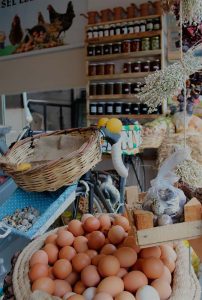
Services
Bardi provides a vast range of local shops offering traditional food and products of the highest quality, which are typical of the area. Schools, Banks, Post Offices, Pharmacies, Public Health Assistance, Avis and Blue Cross are examples of some of the many services accessible in the town of Bardi. Particular attention should be paid to the symbolic open-air market that takes place unquestionably every Thursday morning staged between Piazza Vitoria and Piazza Martiri d’Ungheria, uniting the entire Bardi community.
Bars and restaurants
Bardi, a town known for its great hospitality to visitors and residents, offers an enhanced level of food and beverage spots with a balanced mix of bars and restaurants dispersed throughout the town, where at any given time of the day you can relax in good company over a fine glass of wine.
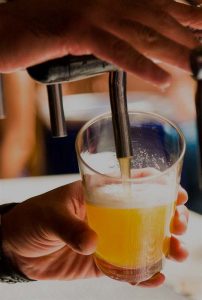
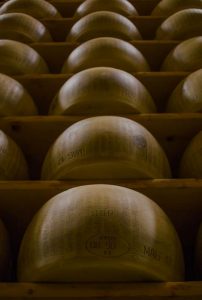
Parmigiano Reggiano
There is simple cheese …
There is parmesan cheese …
Then there is the Parmigiano Reggiano …
And finally, there is the highest quality Parmigiano Reggiano which can only be produced in the Apennines!Surrounded by an abundance of rich agriculture where the cattle are fed with fodder grown within our territory, the “mountain product” represents a premium quality of Parmigiano Reggiano that must strictly comply with rules concerning not only the geographical origin, but also feeding, breeding, and maturing procedures that help provide the finest quality.The exceptional quality of our cheese is recognized at a European level.
Walks, trekking and cycling
If you love going for long, leisurely treks then Bardi is the place for you, as it offers a vast spectrum of tracks and paths, thanks to the splendid peaks surrounding the town, to mention a few: La via degli Abati, Monte Pelizzione (1029 m), Groppo di Gora (1306 m), Monte Carameto (1318 m), Monte Pelpi (1495 m), Monte Lama (1348), Monte Pizzo d’Oca and the imposing Monte Crodolo (1239 m).
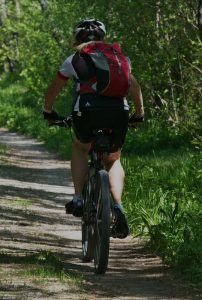
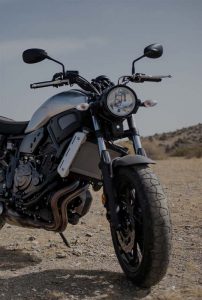
Motorcycling
Among the favourite destinations of every motorcyclist, thanks to the panoramic and engaging roads of the Val Ceno, Bardi is always very popular with two-wheel lovers.
The area also provides the opportunity to indulge in the excitement of motocross sports and is home of the Pianelli circuit which benefits from a 27km long dirt track.
Mashroom harvest
The abundance of chestnut and oak woods combined with a perfect climate and humidity levels makes the area very interesting for all lovers of mushroom picking. From April to June and from September to November you can purchase a license in order to cherish the entire mushroom season, which in addition to being considered an intense outdoor activity, provides oneself with immense satisfaction and a sense of achievement.
For more information:
www.cmtaroceno.pr.it
www.geoticket.it
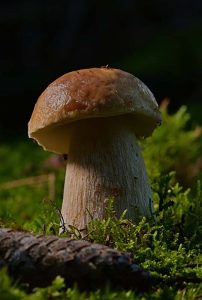
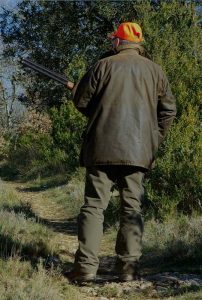
Local hunting
The Parma Hunting Territorial Area (ATCPR6) located in the southern area of the Province of Parma includes six municipalities between the upper Valtaro and Valceno, precisely Bardi, Bedonia, Borgotaro, Compiano, Tornolo, Valmozzola and Varsi for a total pastoral area of 74,963 hectares.
In the area it is possible to practice hunting for a variety of wild animals, more specifically wild boar, roe deer, or hare.
Down by the river
The fast-flowing river Ceno originates from the Ligurian Apennines on the northern slopes of Mount Penna just below the ridge, at an altitude of 1600 m a.s.l. and flows into the Taro River near Fornovo di Taro. The particular purity of its waters and the proximity to the town make it a favourite destination for picnics accompanied by an occasional fresh swim and a great outdoor barbeque.
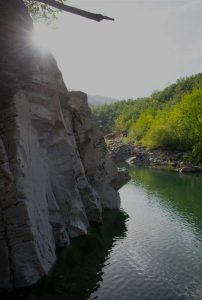
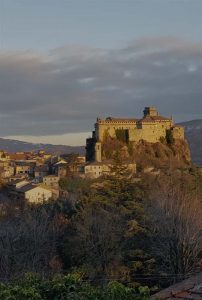
The fortress
One of the most evocative in the network of the Castles of the Duchy of Parma and Piacenza, is most definitely the Fortress of Bardi, which belonged since the second half of the thirteenth century, and for over four centuries, to a family of renaissance princes that went by the name of Landi. Towards the end of the sixteenth century, the Fortress was partially transformed into an elite patrician residence. Visitors can admire the patrol walkways, the towers, the parade ground, the courtyard of honour, the portico, the well, the icebox, the granaries, the prisons and the torture rooms. Today the fortress welcomes exhibitions and constitutes the backdrop to the romantic legend of two young lovers Soleste and Moroello, he, commander of the troops, she, daughter of the castellan promised by her father to another man. A story to be discovered.
For more information:
www.castellodibardi.info
www.castellidelducato.it
Autodromo
The Riccardo Paletti racetrack, situated just 30 km away from Bardi (about 30 minutes by car from the town), is a circuit located in the municipality of Varano de ‘Melegari in the province of Parma, which extends for a length of 2.4 km. Founded in 1969, the plant was dedicated in 1983 to the memory of the young Italian driver Riccardo Paletti, who past away in 1982 during the Formula 1 Canadian Grand Prix.
The racetrack has represented the first stage for many young aspiring racers who later on became successful champions including the MotoGP legend Valentino Rossi, Alessandro Zanardi, Giancarlo Fisichella, Alessandro Nannini, Felipe Massa, Nico Hulkenberg, without forgetting the world champions Jacques Villenueve and Kimi Raikkonen who took their first steps in Formula 3 at Varano’s circuit.
Currently the Varano racetrack hosts competitions for motorcycles, cars (Italian Speed Car Championship, Motoestate Trophy, MiniGp), prestigious events (ASI Moto Show, Formula SAE), drifting, supermotard, test drive, new vehicle presentations and safe driving courses.
For more information:
www.autodromovarano.it
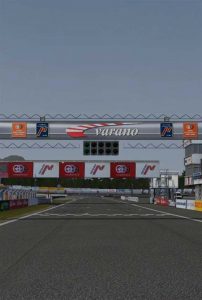
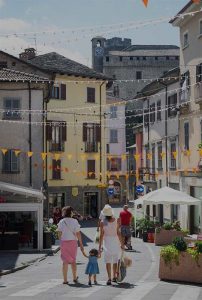
The emigrants
The emigration from the various parts of the Val Ceno that took place immediately after the second world war, has meant that today in the town of Bardi for every 100 bardigiani, 64 reside abroad but remain registered within the AIRE (Italians resident abroad). Every year, hundreds of people who, following the family tradition, repopulate the area during the summer seasons, returning to their country of origin. Not to mention all those who, recalled by a strong bond with their origins, return and never leave.
The cavallo bardigiano
The Bardigiano represents a breed of horse that takes its name from the town itself. It is a breed suitable for life in the mountains where small herds still live in a semi-wild state.
After the Second World War the breed was almost extinct and the State wanted to “save” it by crossing it with Haflinger and Franches-Montagnes stallions, but local breeders managed to oppose it by secretly mating their mares with native stallions ensuring that the characteristics of the breed were not lost.
In the early 70s, the Mountain Community of the Parma Apennines in collaboration with the Provincial Breeders Association gave life to a new selection and recovery program, which took shape in 1977 with the establishment of the Herd Book of the Bardigiano Horse, through a special Ministerial Decree. The same year, the National Exhibition of the Bardigiano made its debut and still continues to repeat itself on the first weekend of August every year in Bardi.
Its tameness combined with its willingness allows it to emerge in activities such as riding school, flat work, gymkhana, and hippotherapy.
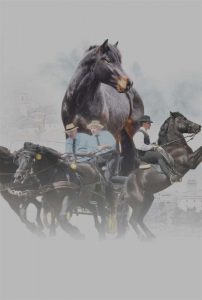
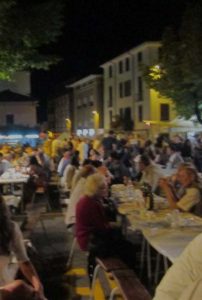
Events and fairs
Every first weekend of August, many efforts go towards arranging the Annual National Exhibition of the Bardigiano Horse, held at Lago Monti, and which this year will celebrate its 47th edition. It is not only a traditional occasion but a prestigious event that allows the community of Bardi to admire such symbolic animals engaged in the annual competition. The Bardigiano horses are also represented as protagonists of many other equestrian shows across various sporting disciplines.
Every year “La festa dell’emigrante”” is a much awaited and symbolic day for the many emigrants returning to their origins and is always a great success in the town. The “Festa” has been celebrated for over 40 years and is without fail celebrated every year on the 13th of August. It’s a celebration rich in delightful food and wine, live music, engaging shows, and most importantly great company.
The traditional festival of Sant’Anna in Val Noveglia promises in the last weekend of July to excite, as always, Valcenese, emigrants and tourists from all over Italy. This great event, which will celebrate its 34th edition this year, will once again bring together thousands of people of all ages under the centuries-old chestnut groves of Pieve di Gravago. There is no need to book and there are over 2000 seats made available to guests.
Another important event is the “Chez Nous” festival, a feast celebrating San Pietro, which takes place on the second weekend of June every year in the hamlet of Boccolo dei Tassi.
Each of Bardi’s traditional annual events are characterized by rich menus containing a wide range of appetizing meat and fish dishes including roast pork, grilled meats, local cakes, homemade bread, and most importantly always accompanied by a fine wine, great company, and stimulating live music. Immobiliare Bardi ensures that fun is a guarantee at each event that Bardi puts on offer for its much beloved community.
But just when you think the fun has come to an end, the annual fair “San Bartolomeo”, held on the 24th of August, is on hand to yet again deliver the community an entertaining day and is a great way to conclude the summer season.
Gastronomy
The area welcomes gastronomic influences from neighbouring regions, and is distinguished by the excellence of its products, exquisite cuisine and healthy eating. Among the typical dishes we find:
CROCETTI: a traditional dish of the Bardigiano culinary tradition. They used to be produced and consumed almost exclusively in Bardi by families that possessed stencil, which often exhibited the family symbol imprinted on such an artisan utensil. They were mainly cooked after a large family gathering by using the excess pasta and stew used to make anolini.
I PEGAI: another traditional dish made with sweet pastry filled with cream, both made with chestnut flour topped with a creamy walnut and ricotta sauce, a typical dish made for the Christmas Eve dinner.
I PANETTI DE PINO’: created by the Bardigiani in memory of Giuseppe Mazzocchi (dear Pino’ who in a dream encountered a lady who invited him to build a small church, which today is the church of the Madonna of Pompeii). The recipe has been handed down from family to family since 1891 and this tradition still continues today.
… and then again … Tortelli d’erbe, the herb and potato cabbage pie with anolini that I strongly recommend our welcomed visitors to try at least once in their life.
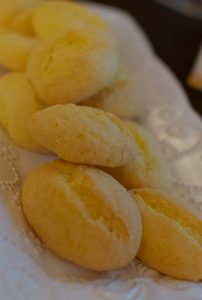
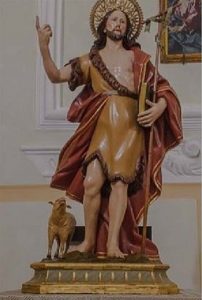
Our patron
San Giovanni Battista (St. John the Baptist), patron saint of Bardi, is celebrated on the 24th of June and to which the San Giovanni Battista church built between 1500 and 1503 is dedicated. Located at the southern end of Piazza Martiri dell’Ungheria, the church represents a Catholic place of worship with Baroque forms and is much loved by the entire Bardi community.
The art
In the church dedicated to S. Maria Addolorata situated in the main square of the town, the chapel to the right of the presbytery is home to the most valuable work of the church, which represents the marriage of Santa Caterina or better referred to as Bardi’s altarpiece (painted in tempera on a 203×130 cm panel), created by Parmigianino between 1521 and 1522. In addition to this masterpiece, the church today preserves other valuable works of art, partly deriving from the nearby church of San Giovanni Battista including the crucifix hanging to the right side of the nave, which dates back to the 15th century, along with paintings depicting Sant’Andrea, dating back to the mid-17th century, and the Bust of the Virgin Mary, modelled in the seventeenth century by Francesco Nuvolone and referred to as “il Panfilo”. Furthermore, inside the crypt a wooden crucifix can be found, which dates back to the end of the 15th century, whilst antique furnishings and vestments are established in the sacristy, as well as a few 18th century chasubles. The rectory is home to a variety of rooms that portray the environment felt during the Last Supper, in particular a fresco decorated on the ceiling remarkably depicting the Last Supper, which dates back to the second half of the seventeenth century.
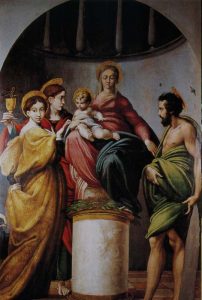
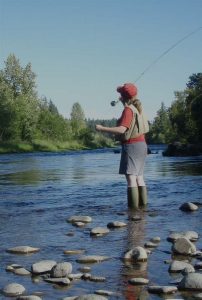
Fishing
The flowing waters of the Ceno are remarkably clear and pure thanks to a number of factors: the presence of large woodlands (including the great forest of Monte Penna); the absence of industrial areas; and a low rate of anthropization in the valley, all of which are characteristics that make it a stream with outstanding qualities including its naturalness and environmental integrity, capable of hosting a decent population of rustic brown trout. Along the entire course of the river you can find places suitable for all fishing techniques including areas particularly suited to touch, fly or nymph fishing and many more.
To discover the best places to spend fantastic fishing days in one of the most beautiful places in Northern Italy, visit this site: pescatorivalceno.wordpress.com

 it
it 